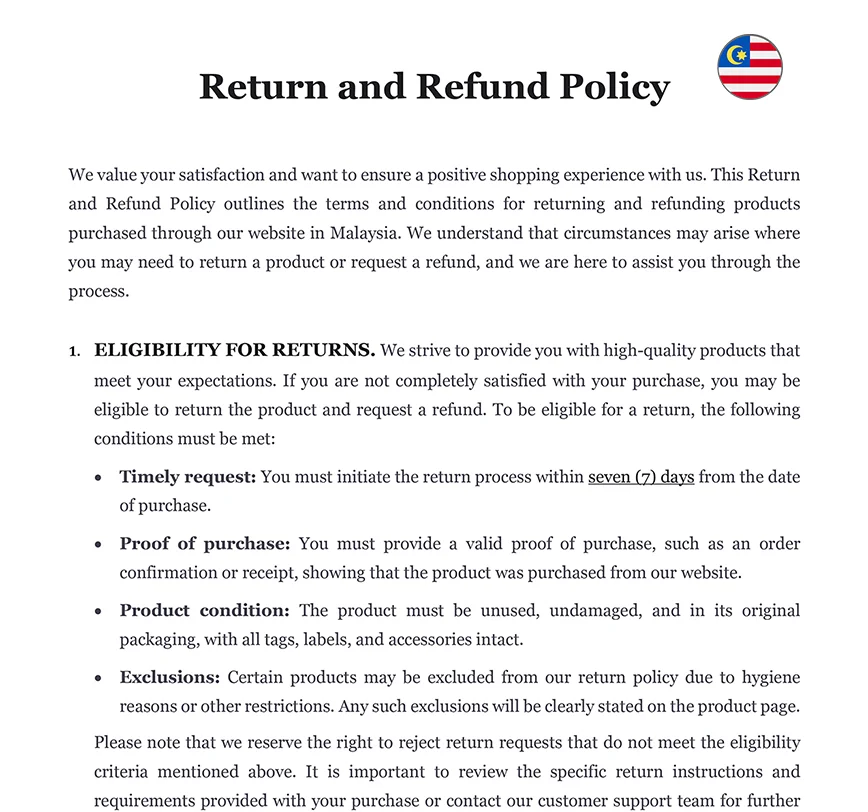Ready to use legal template
Drafted by experienced lawyers
Compliant with Malaysian law
Ready to use legal template
Drafted by lawyers
Compliant with Malaysian law
Home › Intellectual property › Return and Refund Policy
Learn more about Return and Refund Policy in Malaysia
A return and refund policy is a set of guidelines and procedures established by a business or organization to outline the process by which customers can return or exchange products and receive refunds for their purchases. It serves as a clear framework that defines the terms and conditions under which returns and refunds are accepted, including eligibility criteria, timelines, required documentation, and any applicable fees or restrictions. It aims to provide transparency and ensure a fair and consistent approach to customer satisfaction while balancing the interests of both the customer and the business. Themis Partner offers you an easy to edit Return and Refund policy drafted by lawyers to comply with the law in Malaysia.
Table of contents
-
What is a Return and Refund Policy?
-
Why use a Return and Refund Policy?
-
What should it include?
-
What is the process for initiating a return or refund?
-
Are there restrictions on returning certain items?
-
How does it address damaged or defective products?
-
What if I don’t have a Return and Refund Policy?
What is a Return and Refund Policy?
A Return and Refund Policy is a set of guidelines and rules established by a business or organization to outline the terms and conditions regarding product returns, exchanges, and refunds. It serves as a legally binding agreement between the company and its customers, providing clarity and transparency about the rights and obligations of both parties in the event of a return or refund request. The document typically includes information about the time frame for returns, acceptable reasons for returns, the condition of the product for eligibility, any associated fees or restocking charges, the process for initiating a return or refund, and any additional terms and conditions specific to the company’s policies. It aims to protect the interests of both the business and its customers by establishing clear procedures and expectations for resolving issues related to product returns and refunds.
Why use a Return and Refund Policy?
Using a Return and Refund Policy is essential for businesses to establish trust and provide a clear framework for addressing customer concerns.
| ➤ Firstly, it helps manage customer expectations by outlining the conditions under which returns and refunds are accepted. By clearly communicating these terms, customers can make informed decisions about their purchases, reducing misunderstandings and potential conflicts. |
| ➤ Secondly, a well-defined policy helps streamline the return process, making it easier for customers to initiate returns or seek refunds. This enhances customer satisfaction and loyalty by demonstrating that the business values its customers' needs and is committed to resolving any issues. |
| ➤ Additionally, it protects the business from fraudulent claims or abuse by setting boundaries and procedures for returns. It also establishes a consistent approach to handling returns, ensuring fair treatment for all customers. |




